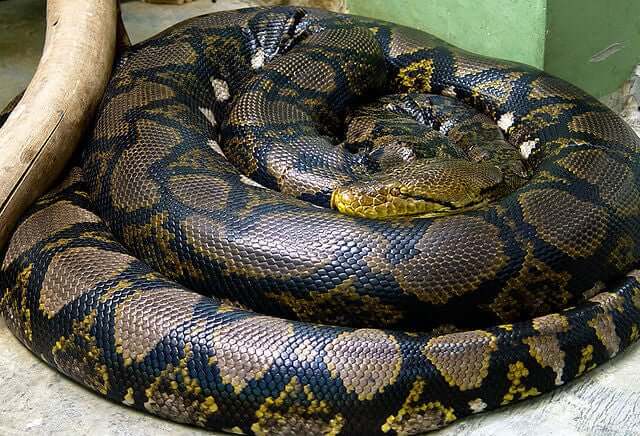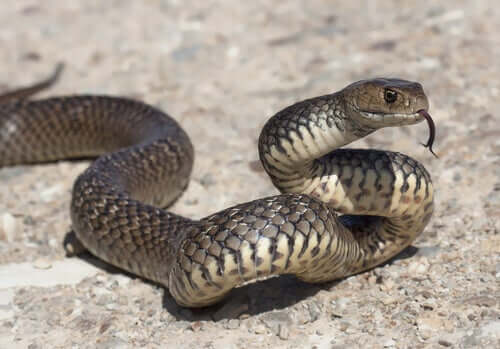How to Properly Feed Your Pet Snake


Written and verified by the lawyer Francisco María García
Nutritional variations are very typical in a reptile’s diet. However, this isn’t necessarily the case when it comes to a pet snake. Feeding them rodents will be more than enough, although a snake’s diet can also have its degree of complexity.
Feeding times, the mouse’s state, the feeding area, and hibernation are aspects that we must get to know in depth. Having a good amount of information and knowledge will be beneficial for this exotic pet and its owner.
Rodents: The basis of their diet
Rodents are the favorite food of this species. In captivity, their main food is mice, although they also tend to feed on rabbits and guinea pigs.

Snakes are basically carnivorous animals, although there are some omnivorous species. Its inclination towards rodents has to do with its way of hunting and the characteristics of its organism.
With regard to the nutritional contributions, everything will basically depend on the feeding that each particular rodent has had. In addition, the fact that snakes can eat the whole animal allows them to capture every nutrient from it.
How do we serve them food?
Generally, pet snake owners buy frozen rodents. In this sense, the right thing to do is to wait for the mouse or hamster to thaw naturally. We shouldn’t give it to them frozen and it’s not advisable to heat it artificially.
In addition, we do recommend feeding the snake outside the terrarium. The fact is that if we get it into the habit of feeding it from above, it could sometime mistake your hand for food and try to attack.
Those who already have a snake at home will know that this reptile must be fed once a week, generally speaking. The animal’s rest and digestion processes are slow, although this may vary a little according to the species.
It’s best to feed them a dead mouse
Although these are excellent hunters, it’s appropriate to get the animal used to eating dead rodents. The point here is to prevent the mouse from doing any damage to the reptile in the middle of the struggle.
In time, it will simply get used to it and it will avoid receiving any damage to its head and trunk. However, we should mention that if a snake rejects a particular mouse, it’s best not to insist. The reason may be that the mouse could be contaminated and the snake is aware of it.
A pet snake and its feeding behavior
There is a basic principle that rules a domestic snake’s feeding behavior: the smaller the snake, the more frequently it feeds. The younger they are, the faster their metabolism is. Therefore, the smaller the prey needs to be in order for them to swallow it.
For example, when the reptile is a newborn or measures a maximum of 35 inches long, it should be given a mouse or two weekly. However, if they are up to 70 inches long, it’s appropriate to feed it a rat every seven or ten days.
In the case that it exceeds 70 inches long, the snake’s food should consist of one or two rabbits every ten days. Nevertheless, the more food it processes the faster and more uncontrolled its growth will be. Once they’re older, some pet snakes can be really large depending on the species.

It’s not all mice
Mice can be a pet snake’s main dish, although not the only one. As we commented before, in the case of older snakes the best suitable food is rabbits.
Nevertheless, there are other combinations we can also try. For example, if we want to mix it up a little we can put a combination of fish with some benign insects like larvae. Crickets are not an option as they are capable of eating the snake’s scales.
We should note that some species of snakes eat eggs or even other small reptiles like frogs.
Rest: The key to a pet snake’s diet
Resting and hibernating is what lets this animal gobble their prey entirely. Therefore, their owners must try to respect these times by avoiding handling or disturbing the snake.
The first three days are key and the ideal thing is to leave them alone in their terrarium. Handling them during this period can lead to vomiting and expulsing all the food they had eaten. Another aspect to remember is that many of them eat at night time.
Respecting the digestive cycles of these pets, being raised in captivity as opposed to in the wild, is vital for their development and well-being. We have to bear in mind that adaptation to such highly specific qualities is necessary as far as the animal kingdom is concerned.
In sum, snakes are animals that require a great deal of respect. Though there are many snakes that make suitable pets for both adults and kids, the safety of owning a snake as a pet is always a concern. There have been reports of unfortunate events in the media, like the story of two boys who were strangled to death by an escaped pet python.
However, these isolated tragic events shouldn’t completely discourage people from choosing an appropriate species of snake to adopt as a pet. Safety first!
This text is provided for informational purposes only and does not replace consultation with a professional. If in doubt, consult your specialist.